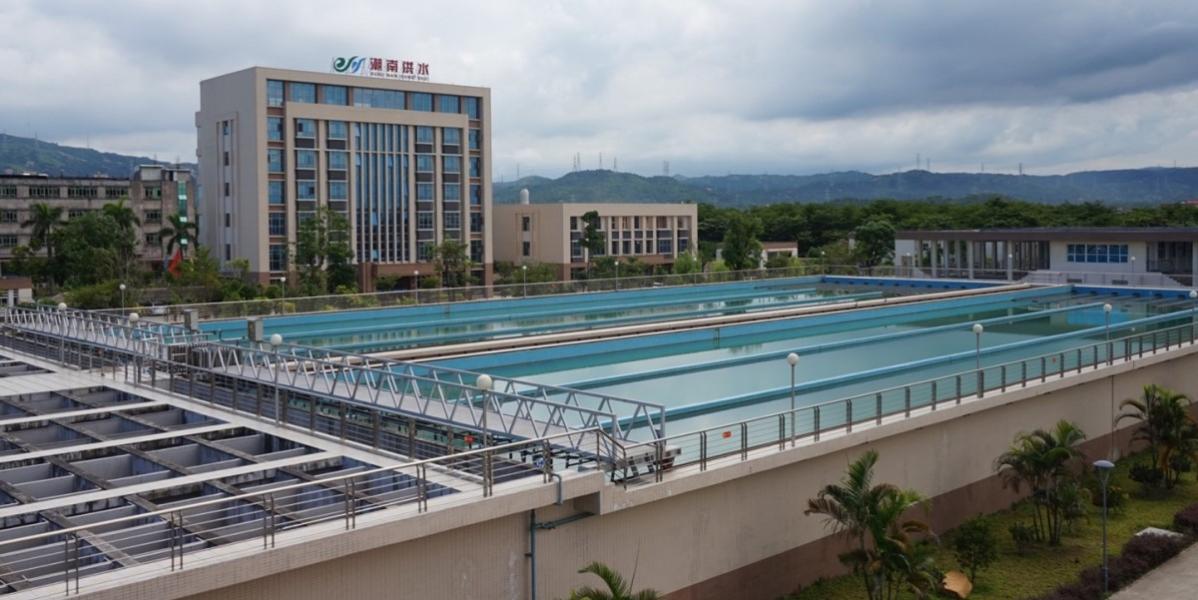East Asia Blog Series
Integrated Approaches and Institutional Reform for Equitable Supply of Safe Water to Rural Residents
Baochang Zheng 24 Aug 2023
A project in Chaonan district in the PRC shows how to improve services in rural areas and small towns with scarce water resources.
Overview
Residents of Chaonan district in the People’s Republic of China (PRC) were suffering from absolute water scarcity. During the dry season, some areas had no water supply at all. Water was supplied mainly to residents of towns and rural households close to these towns. The lack of water affected the district’s economic development and people’s health and quality of life.
A project supported by the Asian Development Bank (ADB) has provided safe, reliable and equitable water supply to both urban and rural residents. It improved water supply by strengthening water resources management, upgrading the water supply infrastructure, and supporting institutional reform and staff capacity building.
The project helped integrate independent water systems under one water utility and improved the company’s performance. It improved water services in rural areas, reduced water tariff by 40%, resolved health problems due to the high fluoride content in the groundwater, and relieved women of the burden of fetching water.
This case study offers lessons on how to improve equitable access to clean water in rural areas and small towns with scarce water resources.
Project information
Project snapshot
- Approval date:28 February 2014
- Closing date: 31 March 2022
- Total project cost: $185 million
- Executing agency: Chaonan District Government, Guangdong province, People’s Republic of China
- Financing: Asian Development Bank
Context
Chaonan district is a county-level administrative division of Shantou municipality in Guangdong province, with a population of about 1.41 million spread across 600 square kilometers (km).
Due to its large rural population and less-developed industry and services, the district fell far behind developed regions in Guangdong in terms of economic growth and fiscal revenue, and it was even below the national average. Its per capita gross domestic product in 2011 was only CNY16,379 (more than $2,000 at current exchange rates), which was 32% of the provincial average of CNY50,807 and 46% of the national average of CNY35,198.
Water supply capacity was 135,000 cubic meters per day (m3/day), which was far below the demand for domestic and industrial uses in the district.
Challenge
Chaonan faced the following challenges in ensuring water security:
Absolute water scarcity. Annual water resources of Chaonan totaled about 580 million m3, which is equivalent to only 450 m3 per capita per year and internationally considered as absolute water scarcity.[1]
Lack of water treatment and supply facilities. The water supply systems served 68% of the district population but could not guarantee 24/7 services. Nonrevenue water was as high as 50% due to low technical standards, aging pipes, and lack of maintenance. Some 429,600 residents (32% of the population) did not have access to tap water and suffered from serious health problems because of the high fluoride content in the groundwater.
Weak institutional capacity. Established in 2012, the Chaonan Water Supply Company had limited control over water distribution and tariffs for end users because the distribution pipes were owned by individual towns or villages. There were three water supply systems that were not connected to each other and cannot supplement each other if one system is facing a water shortage. This situation resulted in higher overall cost, low efficiency, inadequate maintenance, and unfair and high tariffs.
Water pollution. Soil erosion and eutrophication, which is characterized by excessive plant and algal growth, occurred in the catchment areas of the Qiufeng reservoir, one of the major water resources in Chaonan. This was due to nonpoint source pollution, such as agriculture and domestic sewage. Lian River, the only river that flows through the district, was seriously polluted. The water quality of most sections was below class V, which means that it could not be used for irrigation or landscaping.[2]
Solutions
The Guangdong Chaonan Water Resources Development and Protection Demonstration Project was designed to (i) ensure equitable water supply, (ii) improve the district’s water resources management and the water utility company’s performance, and (iii) promote conservation and step up water security for both urban and rural residents. Funded by a $100 million loan from ADB, the project provided an integrated approach to delivering improved and equitable water supply services to the urban and rural residents of Chaonan.
Reforestation. The project reforested 1,695 hectares (ha) in upstream catchment areas of Jinxi, Longxi, and Qiufeng reservoirs, the three water sources of the district.
Solid waste management. The project established a solid waste collection and transfer system in Chengpo and Qiufeng villages around the Qiufeng reservoir, which is operated by a private company. The service is jointly paid by residents and the local government.
Water supply infrastructure. Water supply pipelines, totaling 1,700 km, were installed or upgraded; 282,000 water meters were installed or replaced; and three water supply plants were constructed or reconstructed.
Institutional reform. With the implementation of the project, the independently operated water supply systems were connected to the new unified water supply system. Towns and villages were no longer involved in water supply operation, maintenance, and tariff collection. The Chaonan Water Supply Company took full responsibility of the operation and maintenance of the water supply in the district.
Capacity building. The project helped upgrade the skills of operational staff, improve operational performance and viability, and established water quality monitoring and water supply control centers. It set up a disaster prevention center for three natural hazards: flood, drought, and typhoon; and a water and environmental awareness education center to enhance capacity building. During the project implementation, 323 project staff were trained with the support of the recruited project implementation consultant.
The project recruited two consulting firms to conduct a research program on water resources protection and pollution control measures in the reservoir areas, and develop an action plan on water resources protection and development.
Results
Water quality. The water quality of the reservoirs is maintained at Class II, which is first-class drinking water.
Water utility’s performance. The project strengthened the company with improved infrastructure and skilled operational staff. The operational performance was improved with water service coverage for urban–rural residents increased to 100% in 2022 from 68%, and nonrevenue water reduced to 26% from 50%.
Water equity. The integration of urban and rural water supply systems ensured improved and equitable water supply services to urban and rural residents in Chaonan, which is ADB’s value addition to inclusive and balanced development. After project completion, the water supply capacity increased by 110% to 282,000 m3/day, and water users increased to 268,723 households from 179,561.
The institutional and tariff reforms have made services equitable and affordable to all. The tariff per ton for residents was decreased by 40%, benefiting 1.41 million residents in the district.
Social impact. The project contributed to improving public health, income, and overall quality of life in Chaonan. At the end of the project, fluorosis morbidity rate was reduced to 2.24%, and the district is no longer listed as a dental fluorosis endemic attention area. Per capita annual net income of rural residents increased by 250% to CNY20,082 from CNY5,739, and the average wage of urban households increased by 300% to CNY85,920 from CNY20,761. The residents’ satisfaction with the water supply services increased to 88% from 50%.
Gender equality. The project created opportunities for women and enabled their full participation as both beneficiaries and agents of progress. A total of 684,839 women (48.5% of total beneficiaries) benefited from reliable and safer water supply services. Some 13,264 (48.7%) of the women are new rural tap water users, which means they no longer need to fetch water for their household. This gives them more time for self-development.
Lessons
Nonstructural measures. The project adopted nonstructural measures to improve watershed management and protect water sources from pollution, including reforestation in upstream catchment areas, environmental awareness building and education, and solid waste treatment in rural villages. These measures provide broad guidance and reference for local decision makers and help other regions to build water supply systems systematically.
Integration of urban and rural water supply systems. The project provides better water supply services to both urban and rural residents in the district by adopting common service standards and water tariff. This model can be replicated in many rural and small-town water supply systems in the PRC to improve services and efficiency.
Institutional and tariff reforms The project supported the executing agency’s institutional and tariff reforms by (i) streamlining institutional arrangements for water supply services in the district, which means removing involvement of towns and villages to allow the water company to collect tariffs directly from end users; (ii) making services equitable to all and affordable to the poor according to local conditions; (iii) strengthening tariff-setting mechanisms through public hearings; and (iv) increasing industrial tariffs and improving the water utility’s performance to recover costs.
[1] Hydrologists assess scarcity by looking at the per capita water resource. There is water scarcity when the annual water availability drops below 1,000 m3/person and absolute water scarcity if it is below 500 m3/person.
[2] The PRC’s national standard defines five water quality classes: class I for headwaters and natural reserves; class II for first-class drinking water sources and habitats of rare species; class III for second-class drinking water sources, aquaculture, and swimming; class IV for water sources for industrial use, and recreational use that does not involve direct human contact with water; and class V for water sources for agricultural use and landscaping.
References
Author

Baochang Zheng
Senior Project Officer, East Asia Department, ADB
This blog is reproduced from Development Asia.


